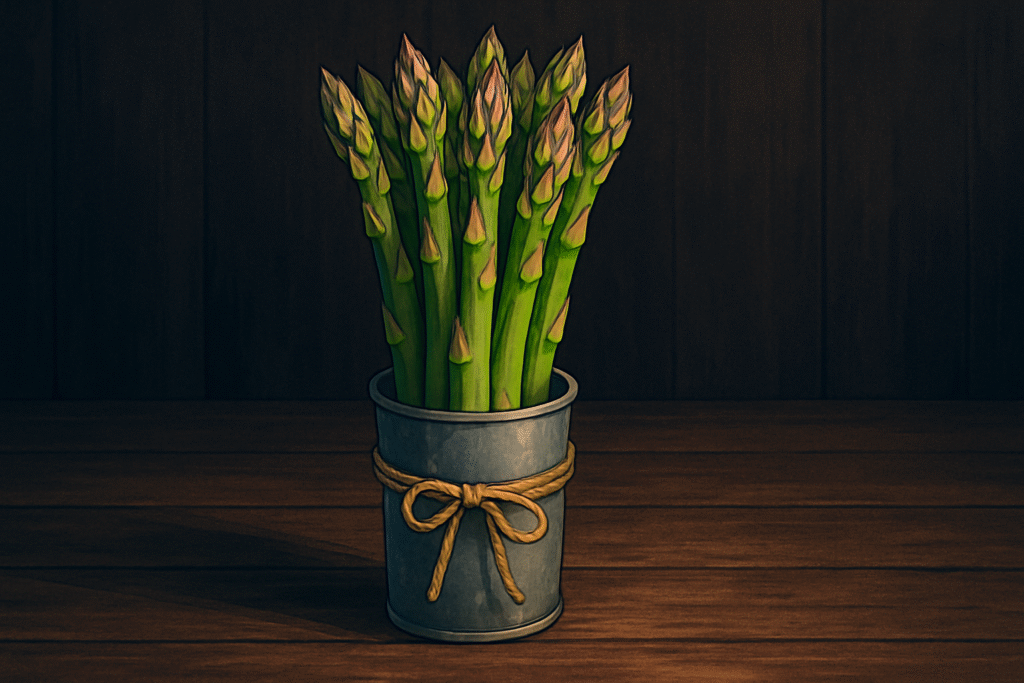Asparagus (Asparagus officinalis)

About Asparagus
Asparagus is a springtime delicacy known for its grassy, sweet, and slightly earthy flavor. Whether grilled, steamed, or shaved raw, its firm stalks and tender tips bring elegance to plates across cultures.
It’s one of those vegetables that signals a change of season — fleeting, luxurious, and prized by chefs and gardeners alike.
The History of Asparagus
Asparagus has been eaten for thousands of years — cultivated by ancient Egyptians, Greeks, and Romans. The Romans even created a “fleet” of ships specifically for transporting it quickly — they called it Asparagus officinalis for a reason.
In the Middle Ages, asparagus was reserved for nobility due to its delicate nature and short harvest window. By the 18th century, French and English aristocrats considered it a luxury vegetable.
It’s still celebrated as a seasonal specialty across Europe, particularly in Germany, where white asparagus (Spargel) season is a national event.
The Science of Asparagus
Asparagus contains asparagusic acid, which is responsible for the distinctive smell in urine after eating it — a phenomenon that varies by individual genetics.
It’s also high in glutathione, a powerful antioxidant, and fructooligosaccharides, which support gut health. The tips are especially tender and concentrated in flavor due to younger plant tissue.
The green color comes from chlorophyll, while white asparagus is grown under soil to prevent sunlight exposure.
The Geography of Asparagus
Asparagus is grown worldwide, but thrives in cooler, temperate climates with sandy soil and good drainage. It needs dormancy in winter and comes back year after year from the same crown.
Germany, Peru, China, and the U.S. (especially California and Michigan) are major producers. In the UK and northern Europe, local asparagus has cult status during spring harvest.
Varieties of Asparagus
Mary Washington
A classic heirloom variety with strong green color and reliable flavor. Widely used in home gardens.
Jersey Knight
High-yielding, disease-resistant, and thick spears. Ideal for commercial production and consistent harvests.
Purple Passion
Deep purple spears with a sweeter flavor and tender texture. Color fades when cooked.
Argenteuil
French white asparagus known for its delicacy and used in traditional European spring dishes.
UC 157
A commercial hybrid grown widely in warmer climates like California and Peru.
FAQs All your questions about Asparagus: answered
Why does asparagus make your urine smell?
It contains asparagusic acid, which breaks down into sulfur compounds excreted through urine. Not everyone produces or can detect the odor — it’s genetic.
Is white asparagus different from green?
Yes — white is the same plant but grown without sunlight to prevent chlorophyll. It has a milder, more delicate flavor.
How do you trim asparagus?
Snap the woody ends by hand — they’ll naturally break where the tender part begins.
Can you eat asparagus raw?
Absolutely. Thinly shaved raw asparagus is sweet and crunchy, perfect for salads.